Advertisement
No matter where you live and what climate you experience, the air relative humidity levels can affect your home comfort, and your HVAC system’s proper function. Usually, we spend to much time of thinking about what is the ideal indoor atmosphere? Does the room has dry air? Is our air conditioner properly cooling and heating our homes?
Yet, you should also think about your home humidity levels and what is the ideal indoor humidity. Well, let see what humidity means, what humidity levels should your home has and many various techniques to ideal indoor humidity.
What is actually relative humidity? Very simple, relative humidity informs us how much water vapor is in the air, compared to how much it could hold at that temperature. Now, the ideal indoor humidity for comfort and health is between 30-50%. It means that the air holds moisture between 30-50% of the entire moisture.
If you want to check your home humidity level, then you should get a hygrometer. This device measures relative humidity and temperature. By measuring, you will have a presentation of how much are the humidity levels of your rooms. Ideal indoor humidity levels allow you to feel comfortable at your own pace; feel warmer in the winter and cooler in the summer.
Humidity levels in summer should be from 30-40% and during winter should be between 30-40%. Yet, it still depends on the outdoor temperature. Ideal Indoor humidity levels are crucial for your health, and especially for people with allergies and asthma.
If you do not maintain indoor air quality, you will feel uncomfortable, but you can also become prone to chemical reactions and respiratory disorders. Besides humidity levels, immerse your house and furniture as well as develop certain germs. If your home does not contain ideal indoor humidity, then it is either high or low.
Causes and Effects
Low level of humidity

Low humidity levels problems are generally during the winter period when the air is dryer outside. If dry air enters your home, it makes the indoor humidity level lower. Dry air is the main cause of damaging home comfort, possessions, and your health. Plus, it can impact your skin to feel itchy, cold, as well as dry out your other body parts. All these lead to rough lips and painful throats. Extremely dry air can impact on causing viruses such as flu or cold.
Why? Because viruses survive longer in cool and dry conditions. So, while having a rhinal irritation, you can catch them easily. As longer your indoor humidity levels are lower, your home will definitely suffer big damage from shrinking and cracking. Things made from wood will surely begin bending and dried wood shrinks. Plus, wooden floors are more likely to creak and separate.
High level of humidity

High humidity levels can also impact your home comfort and health. When there is high indoor humidity levels, unfortunately, your body cannot regulate its internal temperature through the evaporation process. Most high humidity problems are during the summer season, yet they can also happen in winter. Especially, if your home is firmly sealed or when there are vaporizers steamy showers, and others.
Your windows condensation in the morning or a smelly odor are often cause of high humidity in your house. When warm, humid air comes in contact with cold air inside, the air cannot hold water vapor when the temperature drops. Then it results in condensation. High humidity in your come will not only make you uncomfortable, but it will make you also sick and tired. Plus, High humidity levels encourage fungus growth, dust mites, and mold. All these can lead to difficulty breathing.
How to check your home’s humidity level?
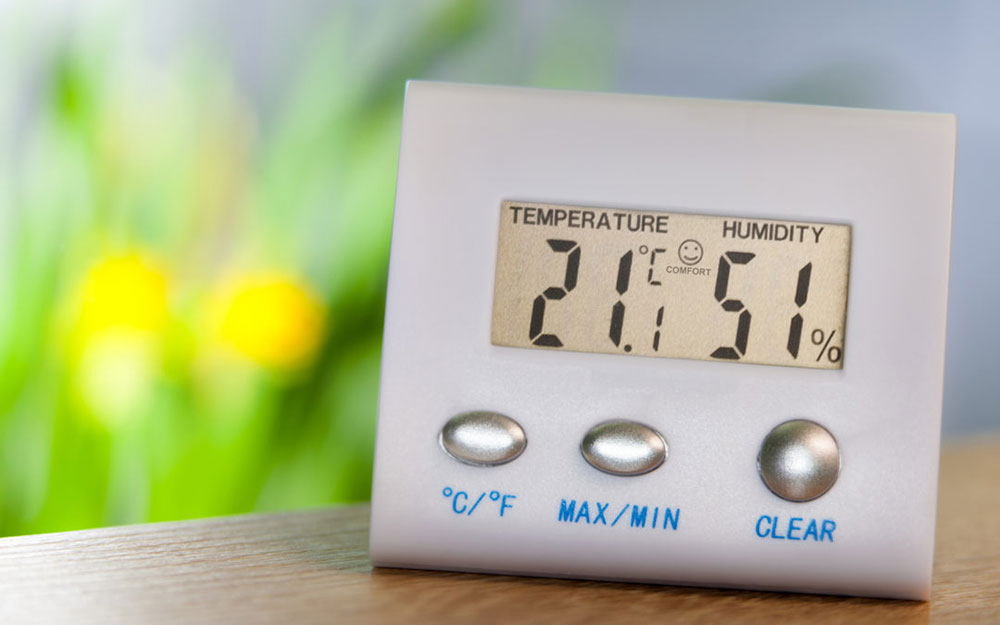
Apart from using your senses to determine humidity levels, there are also tools and instruments that will help you in precising the humidity in your home. As we already mentioned, one of the main tools for checking humidity levels in your home is a hygrometer. Yet, there is another one called a humidity gauge. These instruments are quite often included in clocks and thermometers.
Another good instrument to measure humidity levels in your house is the digital thermostat. This tool is often built-in sensors of humidity. But, if you want to invest in your home for a healthier environment, use the Awair device. It measures dust, carbon dioxide, toxic chemicals, as well as high humidity levels.
Tools and strategies to achieve ideal indoor humidity level
Proper ventilation
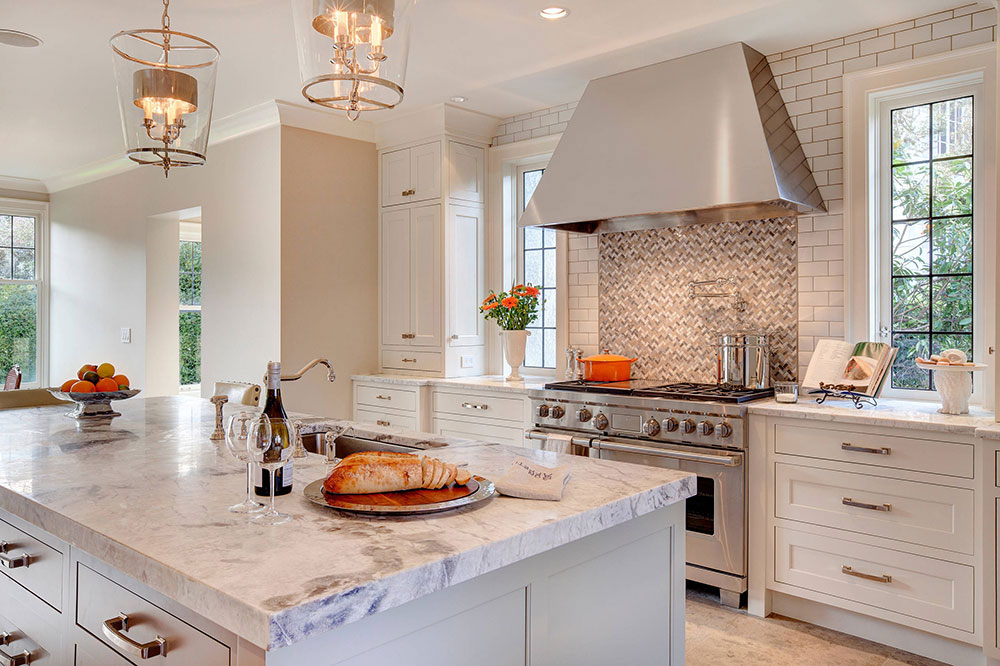
Image source: collaborativeinteriors
Ensure that areas, where moisture is present, are properly ventilated, such as the bathrooms and kitchens. Good air circulation and ventilation is quite an effective and cheap method to reduce high humidity levels. Yet, if humidity is higher outside than inside and you open windows- the indoor humidity will increase.
Thus when you cook or shower, make sure the exhaust fan is turned on. The air can move outside while you are doing these activities. Also, you can turn on the vent fan and leave it like if you notice humidity in your home. If you think that humidity causes many problems at your home, get additional fans. Keep clean the exhaust fans and maintain them usually.
Humidifiers
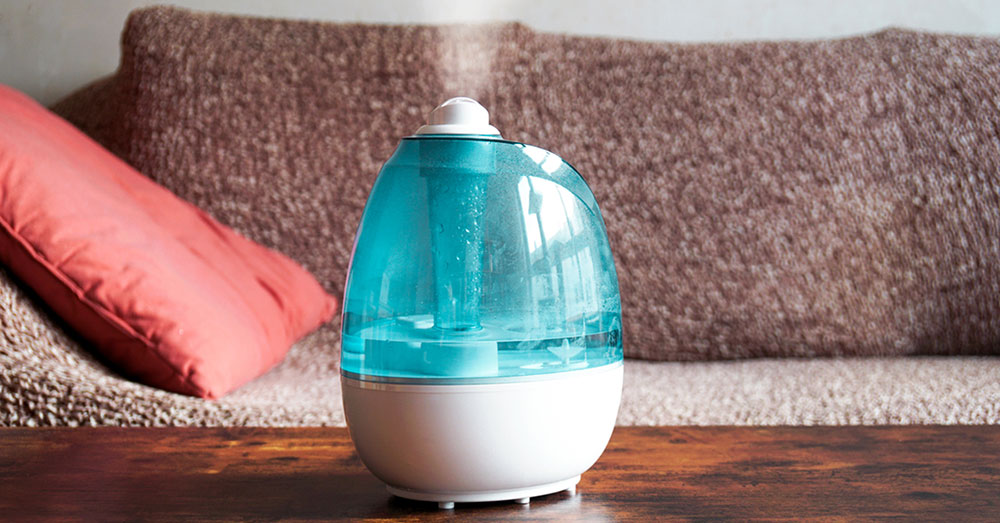
If there is low humidity in your office space or house, it is a sign of dry air. When there is dry air, the best thing to do is to invest in a humidifier. Then place it in the proper room. Humidifiers should be placed at dry indoor air, but not above 50% relative humidity. They capture water before the vent fan blows the humidity all over the home.
So, a humidifier can protect photos, paintings, from brittleness, flaking, and discoloration. Humidifiers contain features that allow sterilizing condensation they produce. So that it will not spread bacteria and you can turn it off whenever you want and after the room reaches a normal level of humidity.
Dehumidifiers
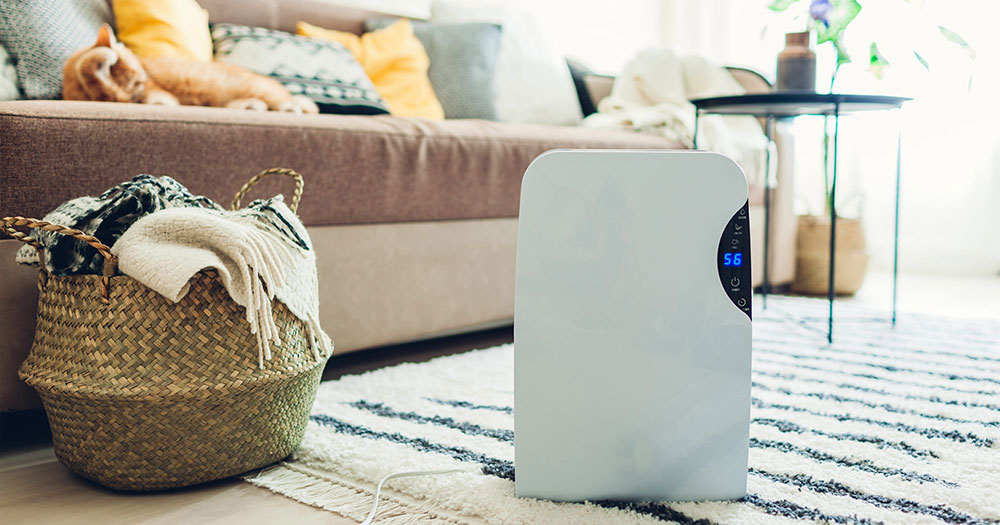
Those who have the opposite problem and that is the high humidity levels at the house. Then, first of all, you need to install a dehumidifier, that operates the same as a humidifier, just in reverse. It sucks air to water. During the summer period or warmer climates is a must to dehumidify and remove humidity from your home rooms.
These instruments work properly when they are located in basements or a sealed area or room, including windows and doors. Dehumidifiers remove air humidity from the air but you must put them away from objects and walls for airflow to work properly.
Air conditioning system
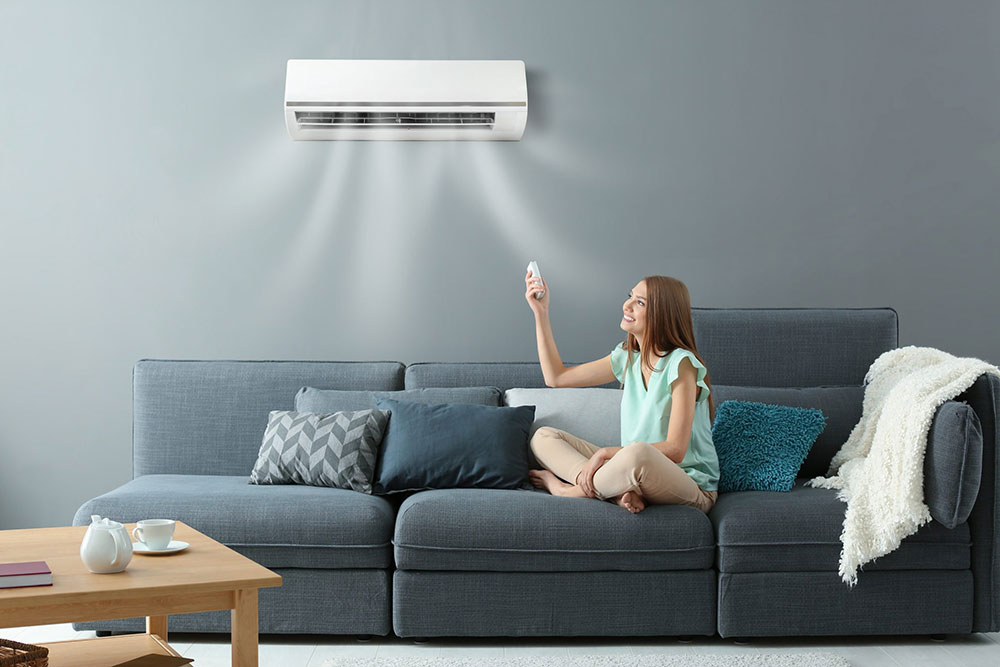
The Air Conditioner units do not just cool down your home’s air, but they also remove humidity. One of the crucial factors against high indoor humidity is your air conditioner. Air conditioning tends to remove the adhesiveness caused by the high humidity summer levels.
Ending thoughts on what is the ideal humidity level in a home
If your air conditioner does not function correctly, then there will be undesired moisture. Make sure that the installed unit is a suitable size for your property’s square footage. Believe it or not, it is true that the quality of your indoor air has a big impact on your health as well as the health of your family. If you are not a professional or expert in this area, you surely have the basic knowledge to protect your family and your home.
If you liked this detailed article on what is the ideal humidity level in a home, you should check out these as well:
